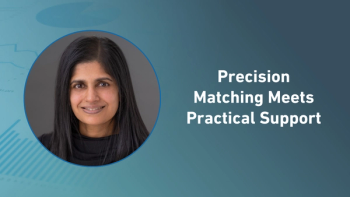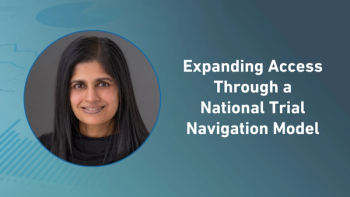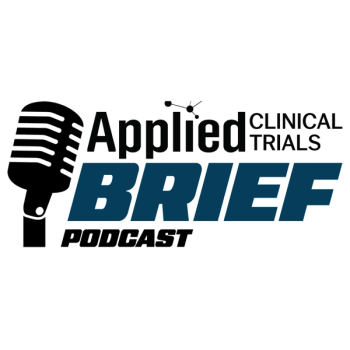What clinops professionals need to know
The Phase III NIMBLE trial demonstrated that cemdisiran, given once every 12 weeks, achieved significant improvements in MG-ADL scores in patients with generalized myasthenia gravis, meeting both primary and secondary endpoints. A combination of cemdisiran and pozelimab (cemdi-poze) achieved nearly complete complement inhibition, but cemdisiran monotherapy performed comparably with less intensive dosing. Safety and tolerability were favorable, with a quarterly subcutaneous administration offering potential operational advantages for long-term patient management. Regeneron plans a US regulatory submission for cemdisiran in 2026, with additional supportive efficacy data from the ACCESS-1 trial in paroxysmal nocturnal hemoglobinuria.
Regeneron has announced positive results from the Phase III NIMBLE clinical trial (NCT05070858) of investigational cemdisiran, a small interfering RNA (siRNA) that reduces circulating levels of complement factor 5 (C5), in adults with generalized myasthenia gravis (gMG).1
Phase III NIMBLE trial results
According to the results, cemdisiran monotherapy, at a subcutaneous dose of every three months, met NIMBLE’s primary and key secondary endpoints, demonstrating a 2.3-point placebo-adjusted improvement in Myasthenia Gravis Activities of Daily Living (MG-ADL) total score.
Efficacy of cemdisiran and cemdi-poze combination
NIMBLE also evaluated cemdisiran alongside pozelimab, a C5 antibody. The combination, dubbed cemdi-poze, resulted in nearly 99% inhibition of complement activity, achieving its primary and key secondary endpoints. Cemdisiran monotherapy performed numerically better across these endpoints, including an average of 74% inhibition of complement activity.
In a press release, L. Andres Sirulnik, MD, PhD, senior vice president and hematology clinical development unit head at Regeneron, said: “Our pipeline approach to treating complement-mediated diseases allows us to tailor treatment to the underlying disease biology. The results of the NIMBLE trial confirm that, in myasthenia gravis, robust efficacy can be achieved without complete complement blockade, whereas in other diseases such as paroxysmal nocturnal hemoglobinuria (PNH), complete inhibition is likely to be necessary. We have previously released data from the lead-in portion of our PNH Phase III trial, supporting the potential for the cemdi-poze combination to deliver best-in-class efficacy in PNH. We are also investigating systemic administration of both cemdisiran monotherapy and the cemdi-poze combination in our Phase III program for geographic atrophy secondary to age-related macular degeneration.”
Study design and endpoints
The NIMBLE trial is a randomized, double-blind, placebo-controlled study assessing cemdisiran and cemdi-poze in patients with gMG who have antibodies to the acetylcholine receptor and may be receiving standard of care immunosuppressants.
- Patients were randomized to receive subcutaneous cemdisiran 600 mg every 12 weeks, cemdisiran 200 mg plus pozelimab 200 mg every 4 weeks, or placebo every 4 weeks.
- The primary endpoint was change from baseline to week 24 in MG-ADL total score, a patient-reported measure of daily functions such as speech, eating, breathing, vision, and mobility.
- The key secondary endpoint was change from baseline in the Quantitative Myasthenia Gravis total score, a physician-administered assessment of vision, swallowing, breathing, and limb strength.
In the press release, George D. Yancopoulos, MD, PhD, board co-chair, president, and chief scientific officer at Regeneron, added: “The NIMBLE trial results underscore the potential for cemdisiran to offer a best-in-class profile for those suffering with myasthenia gravis, providing for robust efficacy with a convenient quarterly subcutaneous administration. The potential for best-in-class efficacy with less than complete complement blockade with cemdisiran monotherapy may also provide for a more favorable safety profile. These exciting results highlight the transformative potential of our siRNA and genetic medicines pipeline to deliver paradigm-changing therapies for patients.”
Regeneron plans to make a regulatory submission in the US for cemdisiran monotherapy in the first quarter of 2026, pending discussions with the FDA.
Additional data from PNH program
As mentioned by Sirulnik, Regeneron reported positive Phase III data from the ACCESS-1 trial (NCT05133531) of pozelimab and cemdisiran (poze-cemdi) combination against standard of care ravulizumab in patients with PNH.2
Results from Cohort A of ACCESS-1 showed:
- From weeks 8 to 26, 96% of patients on poze-cemdi achieved adequate lactate dehydrogenase (LDH) control (≤1.5× ULN) compared to 80% with ravulizumab. At week 26, five patients on ravulizumab and one on poze-cemdi did not reach meaningful LDH control.
- LDH normalization (≤1× ULN) was achieved in 93% of patients on poze-cemdi versus 65% on ravulizumab over the same period.
- At week 26, LDH levels decreased by 84% from baseline with poze-cemdi, compared to a 74% reduction with ravulizumab.
- CH50 profiles showed continuous terminal complement inhibition with poze-cemdi, while ravulizumab displayed waning inhibition at the end of its dosing interval.
Following 26 weeks, all patients who completed ACCESS-1 could enroll in a follow-on open label extension trial and receive poze-cemdi. Results from this study showed that after switching to poze-cemdi, 95% of patients achieved LDH control.
References
1. Regeneron Announces Positive Results from Phase 3 Trial in Generalized Myasthenia Gravis. News release. August 26, 2025. Accessed August 27, 2025. https://investor.regeneron.com/news-releases/news-release-details/regeneron-announces-positive-results-phase-3-trial-generalized
2. Novel Combination of Pozelimab and Cemdisiran (Poze-Cemdi) Achieved Greater Control of Intravascular Hemolysis in Patients with Paroxysmal Nocturnal Hemoglobinuria Compared to Ravulizumab. News release. Regeneron. December 7, 2024. Accessed August 27, 2024. https://investor.regeneron.com/news-releases/news-release-details/novel-combination-pozelimab-and-cemdisiran-poze-cemdi-achieved





